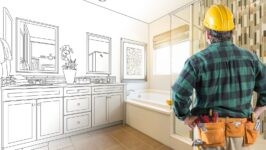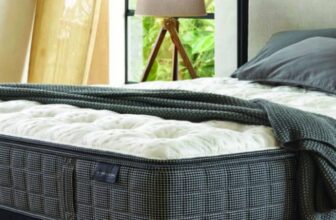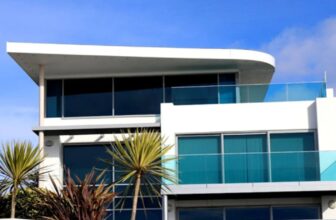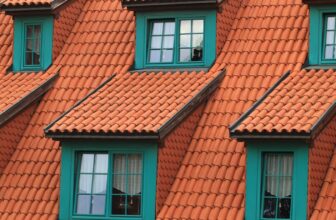
Key Factors to Consider Before Starting Your Custom Home Construction
Building the home you’ve envisioned right from the start can be incredibly thrilling, but let’s be frank—it won’t always be smooth sailing. Your obstacles might appear substantial, but stay determined!
The following sections will give you the key factors to consider before starting your custom home construction. In this article, we’ll guide you through constructing a home and confronting challenges that may arise. The result will transform your dream haven into an actual reality.
1. Assessing your Financial Readiness
Before you start building, you must fully grasp the entire project’s overall expense. This includes the construction costs and extras like permits, design charges, landscaping, and unexpected situations.
Evaluate your current financial standing. You can add up your savings, investments, and other project resources. This evaluation will better understand the amount you can invest in your tailor-made home while keeping your financial security intact.
2. Choosing the Right Location
The soil quality of the land is essential for building a stable foundation and ensuring the structural integrity of your home. Conduct a soil test to know its composition and load-bearing capacity. The various types of soil have different abilities to support structures.
Sandy soils, for example, might require different foundation designs compared to clay-rich soils. Additionally, evaluate the land’s drainage patterns. Poor drainage can lead to water accumulation around your home’s foundation, resulting in structural damage and creating moisture-related issues.
3. Designing Architectural Plans
Decide on the dimensions of your personalized home based on your family’s current needs and aspirations. Consider the number of bedrooms, bathrooms, living areas, and other essential spaces. The arrangement should be practical and effective, encouraging a smooth flow between rooms.

Furthermore, opt for a design that aligns with your preferences—contemporary, traditional, minimalist, or another style that mirrors your aesthetic inclinations.
Pinpoint any distinct elements you wish to incorporate into your home. This could encompass a top-tier kitchen, a home theater, outdoor living spots, energy-efficient attributes, or specialized areas like a home office or gym.
4. Choosing Quality Materials
The lifespan of your home relies on how good the materials are. Go for materials known to last long and not get damaged easily. These materials could be top-notch roofing, strong building parts, and siding that stays tough.
Also, when you choose eco-friendly materials, your home becomes more kind to the environment and leaves a smaller carbon footprint. Aim for reusable materials from renewable sources and actively sustain our environment. While durability and sustainability are critical, the visual appeal of your custom home must be noticeable. Versatile and elegant options like cultured stone and engineered hardwood could ensure visual appeal and durability. Carefully chosen items from the cultured stone collection can be used to create stunning feature walls, fireplace surrounds, and exterior facades that add character and sophistication. Engineered hardwood, on the other hand, brings warmth and natural beauty to floors, stairs, and even cabinetry, complementing the textured appeal of the cultured stone collection and enhancing the overall aesthetic of your home.
Choose materials that align with your preferred architectural style and overall design vision. This could involve selecting specific types of wood, stone, brick, or other finishes that enhance the aesthetics of your home while also providing functionality.
5. Incorporating Green Design
Integrate green design principles by selecting energy-efficient appliances and systems for your personalized home. Opting for appliances with impressive Energy Star ratings will lower energy consumption while maintaining or enhancing performance.
Think about implementing energy-efficient HVAC systems to control indoor temperatures and reduce energy wastage efficiently. Give preference to the use of energy-efficient lighting options, like LED bulbs. Adequate insulation is vital in sustaining a pleasant indoor environment and minimizing excessive heating or cooling requirements. Invest in top-notch insulation materials for walls, ceilings, and floors. You can use access doors like the BA-ARVB Recessed Valve Box for easy system access.
6. Being Prepared for Changes
Throughout the construction process, you might encounter the need for design modifications. These could be due to unforeseen challenges, evolving preferences, or new insights gained during construction.
It’s essential to work closely with your architects and contractors, maintaining open communication to address any design changes that arise. Flexibility in accommodating adjustments ensures that your home resonates more closely with your vision.
Custom home projects can be complex, and costs may fluctuate due to different factors, such as changes in material prices or unexpected construction challenges. It’s crucial to have a contingency budget set aside for unforeseen expenses. Being prepared to adjust your budget allows you to navigate unexpected financial hurdles without compromising the quality of your home.
Final Thoughts
Starting to build a unique home is a big job that needs good planning, smart choices, and being ready to change your plans. As you go through the process, remember the essential things that can make your project successful and satisfying. Also, know that a well-planned custom home project can bring great results.

Your custom home is not just a structure; it mirrors your core motivations and ways of living. By considering these key factors, you can embark on your custom home construction journey well-prepared and poised for success. Your careful planning and wise choices will ultimately yield a home that not only meets your expectations but also exceeds them—turning your dream into a beautifully realized haven for you and your family.



















































































